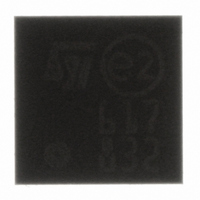STSMIA832TBR STMicroelectronics, STSMIA832TBR Datasheet - Page 5

STSMIA832TBR
Manufacturer Part Number
STSMIA832TBR
Description
IC LINE RCVR 1.8V/2.8V 25-TFBGA
Manufacturer
STMicroelectronics
Type
Receiverr
Datasheet
1.STSMIA832TBR.pdf
(25 pages)
Specifications of STSMIA832TBR
Number Of Drivers/receivers
0/1
Protocol
SMIA
Voltage - Supply
2.65 V ~ 3.6 V
Mounting Type
Surface Mount
Package / Case
25-µTFBGA
Lead Free Status / RoHS Status
Lead free / RoHS Compliant
Other names
497-5147-2
Available stocks
Company
Part Number
Manufacturer
Quantity
Price
Company:
Part Number:
STSMIA832TBR
Manufacturer:
st
Quantity:
23
Company:
Part Number:
STSMIA832TBR
Manufacturer:
STMicroelectronics
Quantity:
10 000
Part Number:
STSMIA832TBR
Manufacturer:
ST
Quantity:
20 000
STSMIA832
2.1
Pin descriptions for reference:
(D+, D-, STRB+, STRB-)
Differential subLVDS data and strobe inputs to the receiver from the camera sensor
interface. The signals operate at 150 mV typical differential voltage levels and a common
mode voltage of 900 mV. The operating data rate is 650 Mbps maximum. Depending on the
CLASS_SEL pin selection mode, Data/Clock signaling or Data/Strobe signaling modes are
activated.
D1-D8, CLK
STSMIA832 output data and clock lines. Parallel 8 bits of CMOS/LVTTL data is output at a
maximum data rate of 82 Mbps per line. Output LVTTL clock is transmitted in parallel with
the data at 82 MHz max.
SYNC-SEL
The horizontal sync and vertical sync signals are extracted from the data stream before
transmitting data on the parallel output D1-D8 if the device is working in ENABLED SYNC
mode (SYNC_SEL = V
mode (SYNC_SEL = GND) the sync codes are not extracted from the data stream and the
embedded sync codes are transmitted along with the data on the parallel output; CLK output
is running. This allows for two modes of functioning, formatted and unformatted
transmission of data on the data lines based on the selection by the baseband processor.
The main function table lists the functions for various combinations of SYNC_SEL pin and
EN pin.
CLASS-SEL
The device embeds all functions forecast inside the SMIA Standard. STRB+ and STRB-
signals are considered STROBE signals when the device is working in HIGH CLASS mode
(CLASS_SEL = V
the STRB+ and STRB- inputs change their strobe functionality to CLOCK in order to be
compliant with SMIA CLASS 0. In Class 0 mode of operation, data is read on the rising edge
only. This allows for two modes of functioning, clocked and strobed transmission according
to different applications and provides high flexibility to configure the final application in
different baseband processors.
H-SYNC, V-SYNC
In the ENABLED SYNC mode, the parallel data on D1-D8 is accompanied by the horizontal
and vertical sync signals on the H-SYNC and V-SYNC pins and together they are used to
reconstruct the image frame.
The H-SYNC and V-SYNC are generated by extracting the SMIA 32-bit synchronization
codes (SOF, EOF, SOL, EOL) on the serial input data stream.
EN
Enable pin is to enable the power-down mode. This mode enables the shutting down of the
device when the interface is not in use. The maximum current consumption can be reduced
to 10 µA. This provision makes this device suitable for portable applications like mobile
phones or portable battery equipment.
L
). If the device is working in LOW CLASS mode (CLASS_SEL = GND)
L
); CLK output is gated. If the device is working in DISABLED SYNC
Doc ID 12174 Rev 5
Pin configuration
5/25













